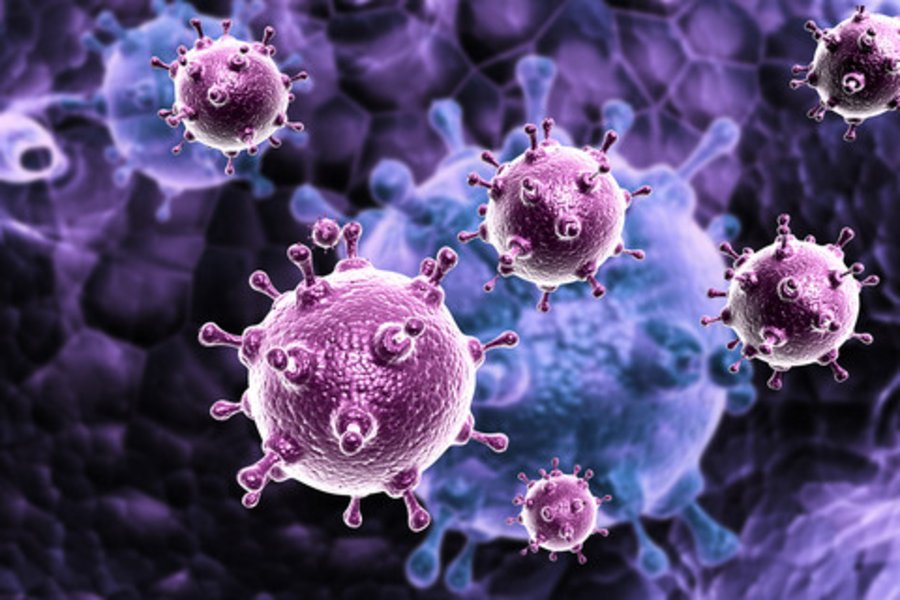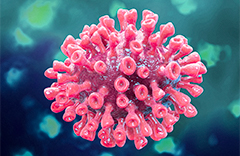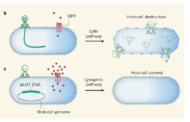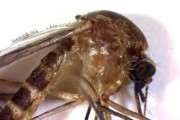 As mammals evolve, so do mammalian viruses. In doing so, they develop creative and effective ways to counter and evade the antiviral responses of their mammal hosts’ immune systems. Researching those mechanisms at the molecular level can reveal key insights into the principles of such strategies relevant to therapy development. An international team of scientists, led by prof. Savvas Savvides of the VIB Inflammation Research Center at Ghent University, set out to do just that. By zooming in on GIF — a protein secreted by the virus that causes Orf, or ‘thistle disease’ — they unraveled viral molecular strategies to counter the mammalian immune system. Their findings, published in Nature Communications, provide the basis for developing antiviral therapies and for exploiting the potency of viral proteins to tweak the human immune system to counter inflammatory diseases and cancer.
As mammals evolve, so do mammalian viruses. In doing so, they develop creative and effective ways to counter and evade the antiviral responses of their mammal hosts’ immune systems. Researching those mechanisms at the molecular level can reveal key insights into the principles of such strategies relevant to therapy development. An international team of scientists, led by prof. Savvas Savvides of the VIB Inflammation Research Center at Ghent University, set out to do just that. By zooming in on GIF — a protein secreted by the virus that causes Orf, or ‘thistle disease’ — they unraveled viral molecular strategies to counter the mammalian immune system. Their findings, published in Nature Communications, provide the basis for developing antiviral therapies and for exploiting the potency of viral proteins to tweak the human immune system to counter inflammatory diseases and cancer.
Orf disease is highly contagious and causes painful scabby lesions on the lips and nostrils of animals such as sheep, goats and other livestock. As a zoonotic disease, it can also be transmitted to humans. In fact, Orf is in the top 20 most important viral diseases affecting the rural poor in developing countries — especially in economies that depend heavily on animal farming and agriculture. Although seldom fatal, the disease not only potentially leads to high mortality rates in young animals and children when lesions make it impossible for them to eat; lesions can also impact livestock reproduction and make infected hosts vulnerable to other infections. It is clear that determining just how the virus goes about its infectious business is of major socioeconomic significance.
An integrative, cross-border approach
Coordinated by prof. Savvas Savvides from VIB-Ghent University and spearheaded by Dr. Jan Felix, an international team of scientists rose to the challenge of shedding light onto how Orf cripples the mammalian immune system. The aim? To obtain structural and mechanistic information through an integrative structural biology approach on how GIF — one of the proteins secreted by the Orf virus — inactivates two key cytokines of the host immune system: IL-2 and GM-CFS. Both proteins play key roles in cell signaling and immune system regulation.
Prof. Savvides (VIB-Ghent University) said, “Our approach involved the use of various methods in the spirit of integrative structural biology, including x-ray crystallography and electron microscopy, combined with biochemical and biophysical studies. To achieve this, we worked closely with colleagues from France, the United Kingdom, and the Netherlands. In addition, much appreciated research funding from national and international agencies, as well as access to specialized facilities at the European level proved to be crucial for our research.”
A rare and surprising discovery
Prof. Savvides (VIB-Ghent University) said, “We investigated GIF because we are intrigued by how viruses use specialized proteins to change the immune system’s response. What we discovered was surprising: it is very rare that one viral protein can target two different host proteins to dodge the immune response, yet this functional duality is exactly what characterizes GIF. Most surprising was the finding that GIF uses its structure in distinct ways to target the cytokines IL-2 and GM-CSF with high affinity. Remarkably, GIF’s structure does not look anything like the natural receptors of the cytokines it targets, yet it is able to mimic their ability to bind to IL-2 and GM-CSF to prevent the normal functions of the two cytokines. A scary feat!”
Great potential for innovative therapies
Prof. Savvides (VIB-Ghent University) said, “By unveiling how GIF works, we have taken an important step towards understanding the molecular virtuosity that viral proteins develop as they evolve, and how they interact with their hosts’ immune systems. As our research moves forward, we would like to consolidate our findings. This, in turn, may help us use viral protein structures, like GIF, to target human proteins in a therapeutic context to combat inflammatory diseases and cancer.”
Source: Sciencedaily











